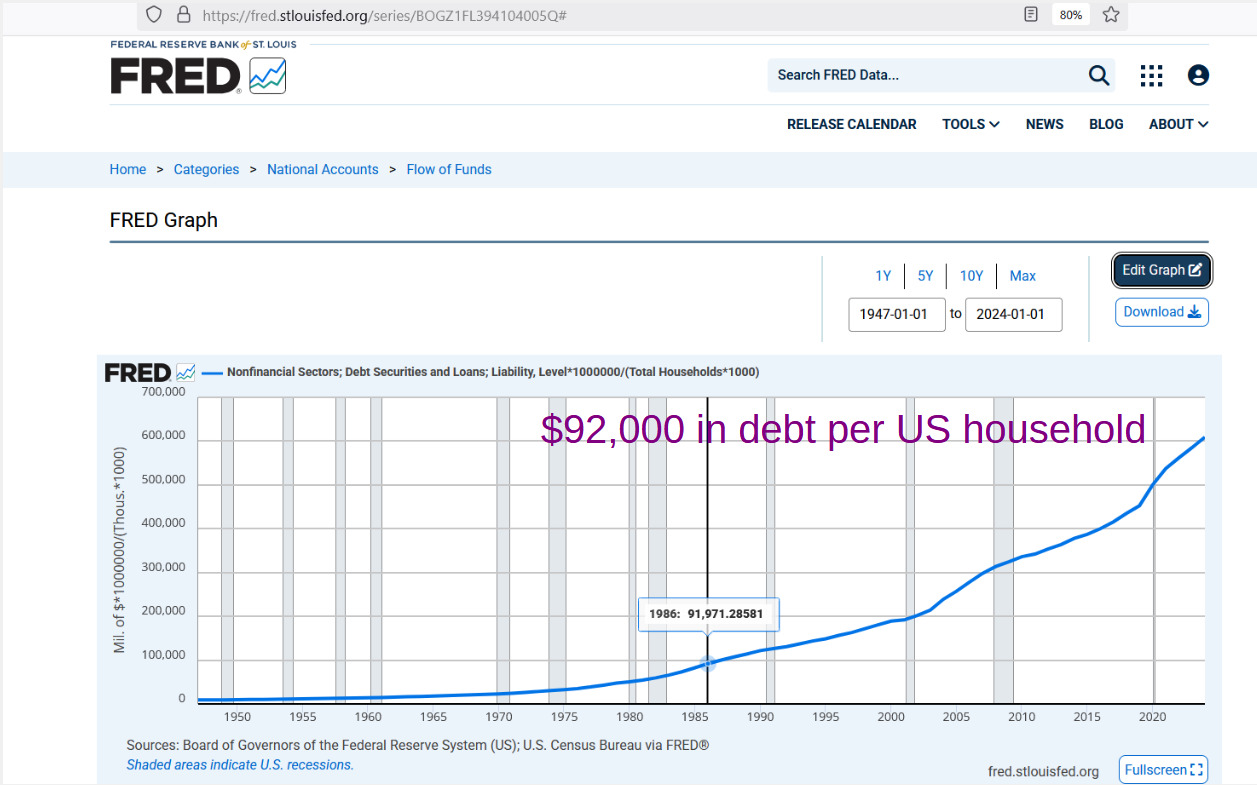Back in 1986, median household income was $24,900:
[click to enlarge]
Total nonfinancial debt, divided into the number of US households, was about $92,000:
[click to enlarge]
It was a situation that was manageable, where 4 years of income could be enough to entirely erase all of the debt hanging over each US household — under the assumption that debt divides evenly into the households. But, because of bad politics, debt has grown much faster than income, and the situation is becoming unmanageable:
[click to enlarge]
With median household income hovering around $81,000 per year, debt on a per-household basis is 7.5x the median income:
[click to enlarge]
It is no longer the case that 4 years of median household income would entirely erase all of the debt hanging over each household — assuming debt got divided evenly into each household. This new situation — where more than 7 years of median household income would be required to entirely erase all of the debt — needs a correction.
To return to a sustainable path where there is a bright future for us, we need to restore the debt:income ratio back to where 4 years of the median income would entirely erase all of the debt hanging over US households. It was true in the 1980’s, and we can make it true again, but it would involve increasing economic freedom dramatically.
The dramatic increase in economic freedom is required in order to offset the effects of globalization, where hundreds of millions of low-wage laborers entered the world labor market after Soviet Communism collapsed and after China modernized. To not increase economic freedom in response to this globalism is a lapse of responsibility.
Moreover, a lack of an enormous increase in economic freedom — in response to this globalist economic pressure — could mean the end of America as we know it.
Reference
[nonfinancial debt] — Board of Governors of the Federal Reserve System (US), Nonfinancial Sectors; Debt Securities and Loans; Liability, Level [BOGZ1FL394104005Q], retrieved from FRED, Federal Reserve Bank of St. Louis; https://fred.stlouisfed.org/series/BOGZ1FL394104005Q
[total US households] — U.S. Census Bureau, Total Households [TTLHH], retrieved from FRED, Federal Reserve Bank of St. Louis; https://fred.stlouisfed.org/series/TTLHH
[median household income] — U.S. Census Bureau, Median Household Income in the United States [MEHOINUSA646N], retrieved from FRED, Federal Reserve Bank of St. Louis; https://fred.stlouisfed.org/series/MEHOINUSA646N







